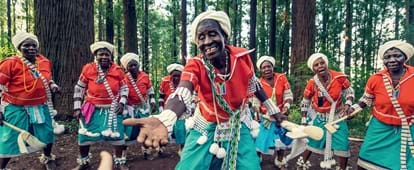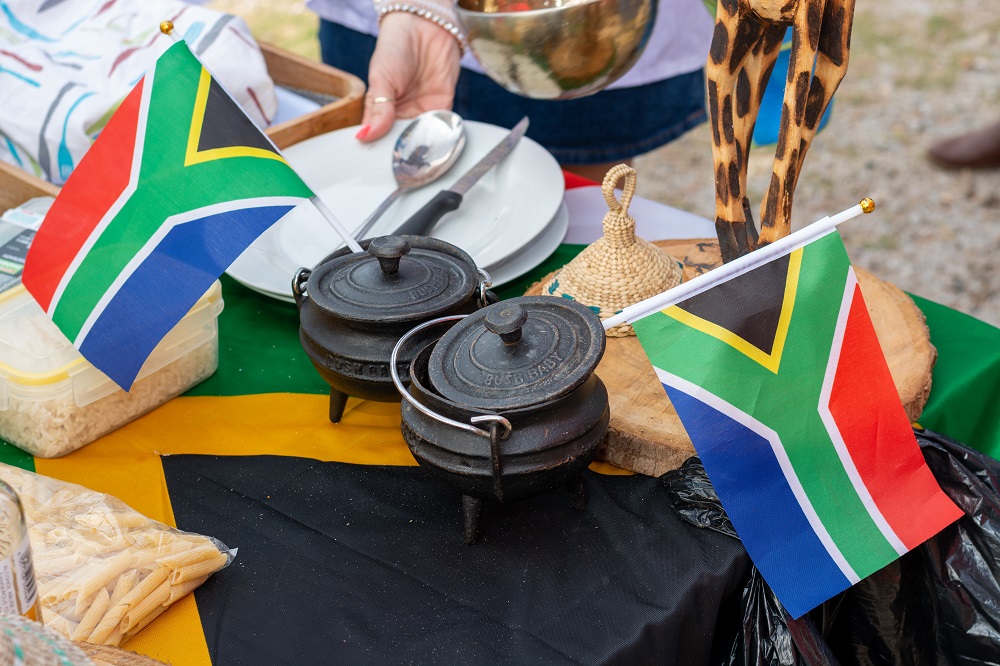A Biased View of South African Culture Today
A Biased View of South African Culture Today
Blog Article
The Ultimate Guide To South African Culture Today
Table of ContentsSouth African Culture Today Can Be Fun For EveryoneThe Best Strategy To Use For South African Culture TodayMore About South African Culture TodayThe Definitive Guide to South African Culture TodayThe Facts About South African Culture Today UncoveredThe Best Strategy To Use For South African Culture Today
An issue of importance in Zambian villages is the passing away of liked ones. All participants of the town placed money, time and effort together for the interment of the deceased.Music and dance is an extremely important aspect of the Zambian society. The different tribal systems have their own dance types; nevertheless, makishi is typical amongst all tribes.
South African Culture Today Things To Know Before You Get This
When it involves music, drums are made use of the most, with a selection of drumming ceremonies. In Zambia, bulk of individuals are Christian; Protestant and Roman Catholic. There are little groups of Muslims and Hindus, with the remainder adhering to local indigenous tribal beliefs.

South African heritage and culture is greatly varied, and contains various teams of individuals that each have their very own practices and ideas. Having such a variety of individuals and societies is what makes South Africa so one-of-a-kind. In the real feeling of the phrase, we are a rainbow country.
South Africa has approximately 3 hundred thousand Portuguese people living in it. Making it the 7th on the checklist of countries with one of the most Portuguese people in it outside of Portugal. Portuguese is not only a society, however it is likewise a language and a citizenship. Portuguese people originate from the country of Portugal in Europe, however, as a result of Portugal (like several various other nations in Europe) checking out the world and conquering other nations throughout the 15th 20th centuries, South Africa has what we call Portuguese South African's living in it.
The Definitive Guide to South African Culture Today
Among the noticeable functions of the topography is a plateau that covers almost 2 thirds of the center of the country. The plateau complex increases towards the southeast, where it climaxes in the Drakensberg range, part of a cliff that separates the plateau from the seaside areas. The Drakensburg consists of Champagne Castle, the highest possible top in the nation.
The region north of the Witwatersrand, called the bushveld, slopes downward from eastern to west toward the Limpopo River, which develops the international border. The western area of the plateau, the middleveld, also descends in the direction of the west and varies in elevation in between the highveld and bushveld. Between the Drakensburg and the eastern and southern shoreline, the land comes down to the sea.
Nearer the coast there is a low-lying level called the eastern lowveld. Southwest of the plateau the nation ends up being considerably more arid, offering means to the stony desert of the Great Karroo, verged on the eastern by the reduced, better watered plateau of the Little Karroo. Separating the completely dry southerly inside from the sandy littoral of the southern coastline and West Cape is an additional array, the Langeberg.
Excitement About South African Culture Today
The country's racially, ethnically, and politically separated background has actually produced nationwide and subnational signs that still work as symbols of the nation, and others signs that are approved only by certain groups. The monuments to white settler occupation and political prominence, such as the Afrikaner Voortrekker ("leader") Monolith in Pretoria and the Rhodes Monument honoring the British colonial empire contractor and Cape prime minister Cecil Rhodes, remain sectarian symbols.
The initial modern-day citizens were the San ("bushman") hunter-gatherers and the Khoi ("Hottentot") individuals, who herded livestock (South African culture today). The San might have existed you could try here for countless years and left evidence of their visibility in hundreds of old cave paints ("rock art"). Bantu-speaking clans that were the forefathers of the Nguni (today's amaZulu, amaXhosa, amaSwazi, and vaTsonga peoples) and Tswana-Sotho language groups (today's Batswana and Southern and Northern Basotho) moved down from east Africa as very early as the fifteenth century

The two previous republics of the Orange Free State and Transvaal (South African Republic) were established by Afrikaner inhabitants that defeated and dispossessed the Basotho and Batswana. Lesotho would certainly have been by force incorporated right into the Orange Free State without the expansion of British protection in 1869. The utmost unification of the nation arised from the South African War (18991902) in between the British and both Afrikaner republics, Recommended Site which decreased the nation to ruin at the beginning of the twentieth century.
Afrikaners traditionally considered themselves the just true South Africans and, while approving complete citizenship to all residents of European descent, rejected that condition to individuals of color until the democratic transition of 1994. British South Africans maintain a feeling of social and social connection to Great Britain without compromising their identification as South Africans.
The Main Principles Of South African Culture Today
The variety and fragmentation within ethnic collections and the equilibrium of tensions between those groups during the twentieth century prevented interethnic civil conflict. While intergroup tensions over sources, privileges, and political prominence stay, those disputes are as likely to pit Zulu versus Zulu as Zulu versus Xhosa or African versus Afrikaner.
From colonial India, British vendors and administrators brought the curved steel decorative roofings and slender lace job columns that still exemplify the outdoor patios of cottages in the areas and cities throughout the nation. Residences of praise contribute an essential building facet even in the smallest communities. In enhancement to the soaring steeples and classic stonework of Afrikaans Dutch Reformed churches, Anglican churches, synagogues, mosques, and Hindu temples supply variety to the spiritual building scene.

Butchering and the developing of typical cereal beer are crucial in securing the engagement and goodwill of the ancestors who are taken into consideration the guardians of great lot of money, success, and health. Indian areas click here for info keep their indigenous cooking traditions and use them on Islamic and Hindu routine and ritualistic events. Afrikaners and Coloured individuals gather at weekend breaks and unique occasions at multifamily barbeques called braais, where area bonds are strengthened.
Because this was the main financial venture of both black Africans and white colonists, conflict between those groups focused on the property of grazing land and animals. In 1867, the largest diamond deposits in the world were found at Kimberley in the west main location. The wide range from those areas aided fund the exploitation of the best gold reef on the planet, which was discovered on the Witwatersrand in 1886.
The Best Guide To South African Culture Today
This resulted in misunderstandings and deliberate misrepresentation in the ventures of white inhabitants and federal government officials with African chiefs throughout the colonial period (South African culture today). In the establishment of African gets, some facets of common and mainly "tribal depend on" land tenure were protected, and even in white rural locations, kinds of public tenure were still exercised in locations with African communities
After the autonomous improvement of 1994, programs for land restitution, redistribution, and reform were instituted, yet development has been slow. The white minority still regulates eighty percent of the land. Following agricultural land intrusions in Zimbabwe, the Department of Land Matters has actually pledged to speed land redistribution.
Report this page